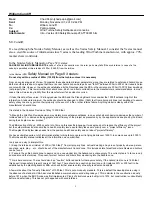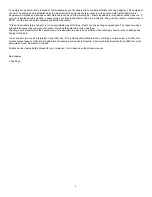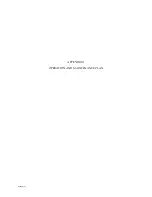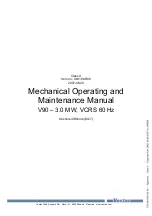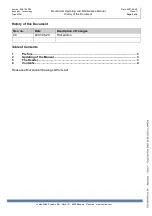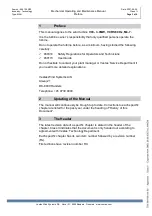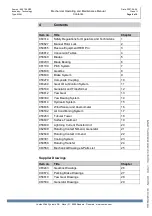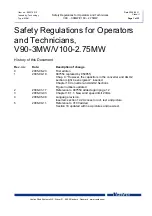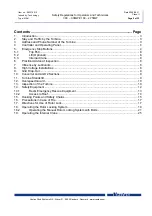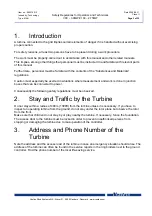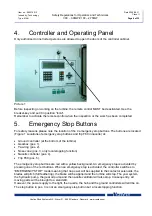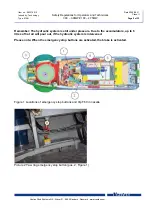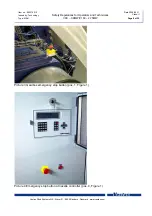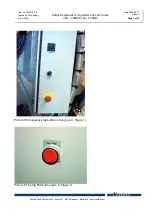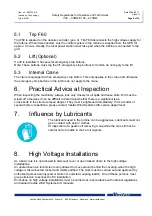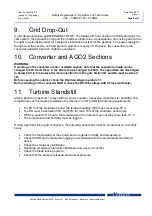
1
William Cundiff
From:
Chad Pepin [chad.pepin@gmail.com]
Sent:
Monday, November 01, 2010 2:44 PM
To:
William Cundiff
Cc:
Patricia Gates
Subject:
Wind Turbine Safety Setbacks and concerns
Attachments:
Info - Vestas V90 Safety Manual.pdf; ATT00031.htm
Mr. Cundiff,
I've read through the Nordex Safety Manual, as well as the Vestas Safety Manual. I consider the Vestas manual
also a credible source of information since Vestas is the leading Wind Turbine manufacturer, with approx. 70%
market share worldwide.
In the Nordex Safety Manual on Page 52 it states:
DANGER! FALLING TURBINE PARTS
In case of a fire in the nacelle or on the rotor, parts may fall off the wind turbine. In case of a fire,
nobody is permitted within a radius of 500 m (1640 ft) from the turbine.
In the Vestas (V90)
Safety Manual on Page 8 it states:
Do not stay within a radius of 400m (1300ft) from the turbine unless it is necessary
.
From an engineering point of view, I'd consider these absolute minimum parameters, since they are related to safety and hazard zones.
Both manufacturers seem to agree that there is a real hazard zone where parts can "fall off" between 400m to 500m. Our research also
concurs with this. However, the setbacks established by the Developer and the ZBA in the variance are 305m (1000' ft) from dwellings,
(not property line). This is well within this hazard zone, which is a direct contradiction to the manufacturers recommendations. In most
cases, this will waive any liability from the manufacturer if an accident occurred.
If I take this data at face value, I'd strongly advise the ZBA and the Planning Board to reconsider the 1000 ft setback in light of this
information. At absolute minimum, the setbacks should be changed to 500m (1640) feet from all property lines (not dwellings) to assure
safety of anyone at any point on their property in the event of a fire or other turbine failure. Anything closer is clearly within the
manufacturer's hazard zone.
It is stated in the Variance Decision of May 13 2009 that:
" Although the Site Plan Review decision may dictate more extensive setbacks, in no event shall such decision decrease the number of
turbines below 13 or decrease the aggregate wind efficiency of the project as presented by by the applicant and analyzed by the Board
during the site plan review process."
The ZBA meeting of May 6, 2009 spent a lot of time on this specific language. It was agreed not to reduce the efficiency of the project,
but the verbal discussion also said that a health or safety issue would likely take some priority over a "project efficiency" issue.
The Douglas Wind Bylaw also speaks from the position health and safety and not about "project efficiency".
We have submitted quite a lot of information stating turbine failure can result in flying debris over 1500 ft, in some cases up to 3000 ft.
The Nordex safety manual validates all the information we've submitted.
I only see one way to interpret this:
1.) Keep the turbines a minimum of 500m (1640 feet)* from all properly lines, not just dwellings. Any area of property where a person
can stand, walk, play.... etc. should be out of the manufacturer's hazard zone. This includes state forest land where hikers and hunters
can be found.
2.) Fence in the entire hazard zone to assure no one can wander into the hazard zone unknowingly. The current plan is to fence in only
an area around the turbines. This doesn't protect hunters and hikers from wandering into the hazard zone.
* This is bare minimum. There should also be a "caution" buffer added to further assure safety. If the hazard (red) zone is 1640 feet,
this doesn't mean safety (green) zone is at 1641 feet. There should be a caution (yellow) zone, (for instance 20% or 300 feet) to be
established by the planning board or ZBA which will further ensure safety of nearby residents and wildlife.
A few words about the "Industry Standard" of 1000 feet: This is not an industry standard. This is a default the developers are using in
the absence of a standard. USA has not established a comprehensive wind siting code yet. This is similar to the construction industry
before 1974, when the BOCA code was first implemented. Plenty of structures were built prior to 1974, but construction is undoubtedly
better and safer today. This has not yet happened with wind turbines.

